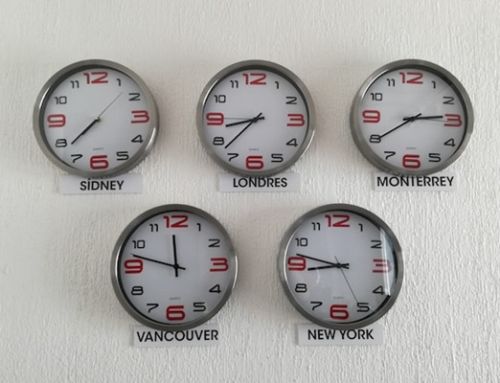The COVID-19 pandemic is undoubtedly one of the worst catastrophes ever. It brought the world economy to almost a total collapse. The economic fallout has been almost as bad as the unprecedented casualty rates. But thanks to the existing internet infrastructure, we were able to keep going. With accessible services at affordable internet prices, more households than ever have internet services available.
This has allowed many of us to continue working and not expose ourselves to unnecessary health risks. However, this new remote working model poses new sets of problems to human resources. Learn more about these challenges below.
New HR Challenges in the Shift to Remote Working
Conventional workplaces typically revolve around workers showing up on time for shifts. In streamlined businesses, tasks are structured and divided for optimal operational efficiency. There are shifts of workers, schedules, targets, and of course, performance monitoring. But more than that, employees can access and rely on their colleagues’ expertise. They can collaborate in meetings and on tasks. The conventional concept of business and corporation is built on physical workspaces.
But the COVID-19 pandemic has made in-person attendance almost impossible. Given the nature of the virus, being in close contact with other people in closed spaces is a bad idea. This is why businesses have finally had to approach remote working as a viable workforce model. Existing internet penetration and modern tech have allowed businesses to manage this shift quite quickly. But it also raises additional challenges for Human Resources and workforce management. These include:
Performance Monitoring
Monitoring performance is a necessary measure in most workspaces. It can help managers identify employees that are struggling and help them overcome various obstacles. However, according to a recent Forbes article, this is usually far easier in a physical workspace. Managers can monitor workers effectively when they share the same floor. But in a digital workplace, this is not always so easy. HR managers may have to look into remote working software systems that can help. Many of these come with monitoring tools that you can configure to various roles. But monitoring and managing performance may still be challenging, especially with increased privacy concerns.
Ensuring Attendance
Ensuring worker attendance can always be a challenge. Business rosters and schedules need workers to be reliable and dependable. Unreliable workers can disrupt workflows, cause unnecessary delays, and slow down team productivity. Attendance doesn’t just mean showing up for work. It means showing up on time and being punctual. Physical workspaces use things like RFID or biometric readers or even software that records login times to ensure attendance. But this is not as easy when employees are working remotely. There is no real way to ensure a worker is at their station when you can’t see them. Using keylogging tools and online attendance recorders, however, could help.
Maintaining Employee Focus
Helping employees focus on their work is key to business success. Employers usually try to get their employees the tools and equipment they need to get the job done efficiently. This can include specialized equipment, software, and even removing distractions from various spaces. But with a remote working setting, this can be far more complex. Regulating an office space of 150 employees is far easier than trying to regulate each individual’s home. That’s not to mention that many workers may have families, dependents, or roommates living with them. Or that they may live in a busy part of town, say, next to a construction site. HR needs to take all of these into account when analyzing the problems that impact workforce focus the most.
Managing Leaves and Absences
Employee leaves and absences occur throughout the business year. But there has not been a crisis of this scale over the past 100 years. So conventional leave and absence management may not work anymore. HR managers need to make allowances for workers who are sick, symptomatic, or even simply exposed to an infected person. Not doing so, and making the worker come in, could jeopardize the safety of more workers. Instead, allowing them time off to care for themselves or sick family members is a much more empathic and appreciable approach. You may even be required to do so by law. The United States, for example, has made adjustments to the FMLA Act concerning paid time off and what situations call for it.
Offering a Better Benefits Program
Competitive employee benefits after COVID-19 are even more crucial for your HR efforts than before. Competitive benefits can help you hire and retain better talent than the competition. Health benefits have always been an important part of any compensation and benefits plan. With the cost of healthcare being extremely high, candidates often place great value on the health benefits an employer can offer. And with a pandemic added to the mix, people may want health benefits more than ever. For HR managers to both hire and retain quality talent, a competitive compensation structure is crucial. This means you may need to revisit your compensation plans, including health benefits like health insurance, coverage, and even medical reimbursements. This could be leveraged in subsequent recruiting efforts as well.
Revamping Recruitment and Onboarding
Finally, HR managers need to rework their approach to recruiting and onboarding new hires. Conventional hiring methods may not work under today’s social distancing and precautionary measures. People are hesitant to meet in person, especially indoors. And an infected candidate could transmit the virus to the recruiter, who in turn could transmit it to anyone they come in contact with. This can include other workers as well. So, it is only sensible to look for safer ways to conduct interviews and hire new talent. Video calls will likely play a big part in your new strategy. Virtual interviews are fairly consistent with regular ones. And you can also flesh out your recruitment and onboarding using various digital platforms purpose-built to help HR personnel.





Leave A Comment